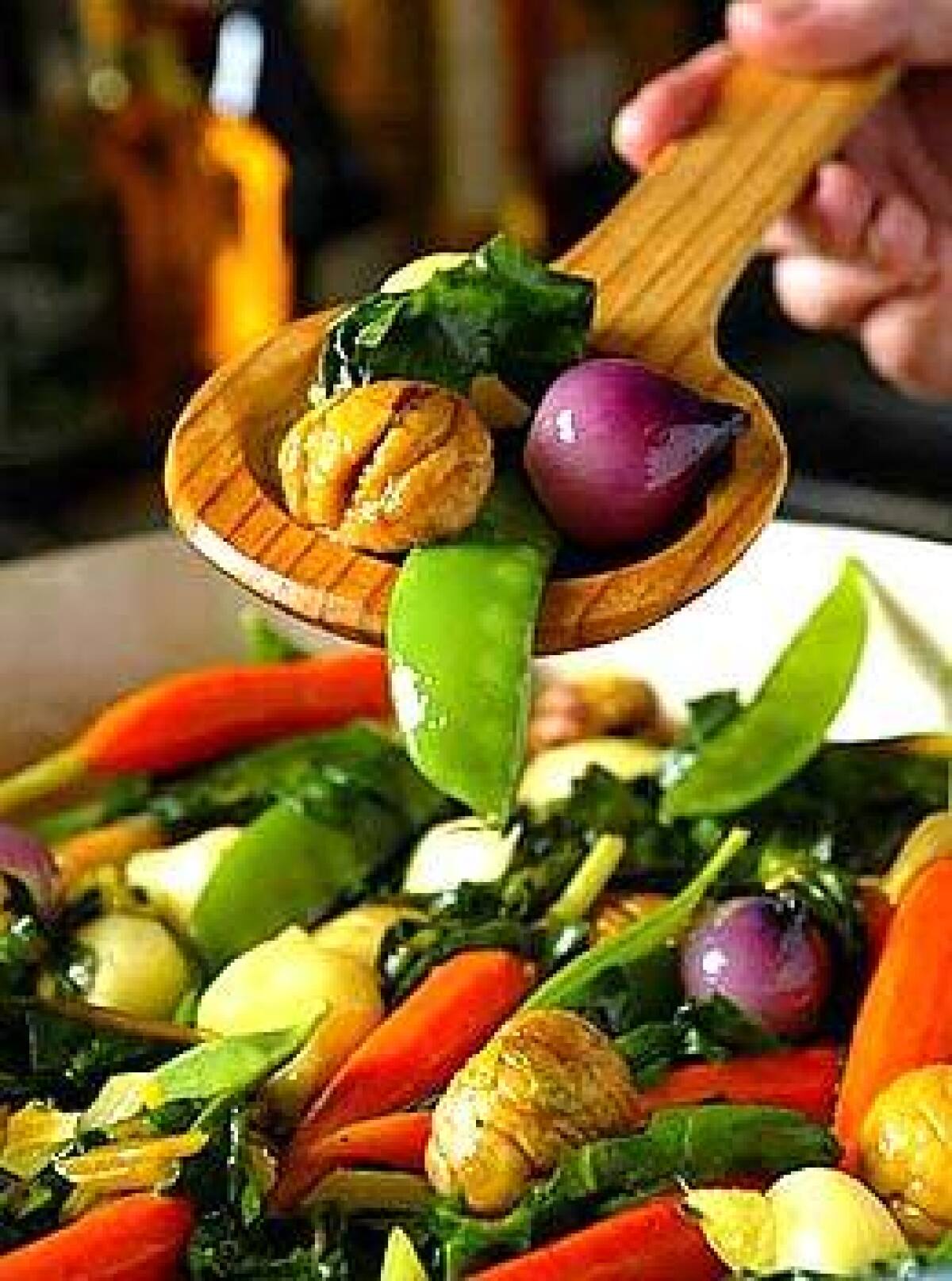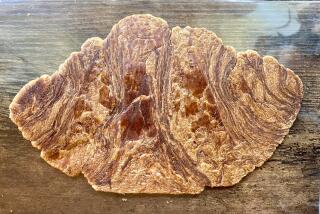Chestnuts? Of course

The chestnut. It’s about as avoidable this time of year as the endless loop of Christmas carols playing everywhere. There it is, in the stuffing. In the bûche de Noël. It’s being candied in marrons glacés, and of course, roasting on an open fire, which gets that darn song playing in your head all over again.
Somehow, somewhere along the way, the chestnut fell into a real holiday rut. Which is a shame, because when chestnuts are fresh and in season — and when they are treated the way any other sort of produce is when it’s at its peak — they can be an incredible ingredient.
Chefs, of course, have had this figured out for a while now. Because of their high water content (about 50%), chestnuts have a flavor and texture more like a vegetable, though they are botanically nuts.
“The chestnut has a complexity like a nice wine — it’s balanced,” says chef Gary Menes of Firefly. “It gives you the sweetness, the savory, the little bit of starch you might crave in a dish, an interesting texture. And it gives you the season. It tells you this is the fall and winter. So many messages from one little nut.”
Menus around L.A. have gotten the message too. Chestnuts are being used in creative salads, soups, gratins. Two dishes we’ve really fallen for — a salad and a cocotte, or casserole — would be ideal for a holiday meal, traditional but with a modern spin.
The chestnut feels right at home with the baby turnips, chard and other vegetables in Menes’ gorgeous legumes cuisines en cocotte, a take on the traditional French preparation of seasonal vegetables cooked in casserole. Whole baby vegetables, pearl onions and whole chestnuts are slowly braised until they are tender and succulent. Recently, Menes has served it alongside braised or grilled meats, but it’s wonderful enough to make it a vegetarian main course. At Chloe in Playa del Rey, chefs-partners Jeff Osaka and Christian Shaffer do a chestnut spin on the standard bistro salad. Sweet chunks of caramelized chestnut contrast with crisp, slightly bitter endive leaves and the dual textures (creamy inside a firm rind) of the aged goat cheese.
Caramelize the whole chestnuts in advance, and the salad can then be quickly assembled for an elegant, impressive start to a holiday meal.
To cook with chestnuts, you have to roast and peel them. Anyone who’s suffered through the experience knows the pleasure of burned fingertips and shards of shell under fingernails. That’s unless you know the damp dish towel trick. We’ve mentioned it in these pages before; here it is again:
First, look for firm nuts that have been kept under refrigeration. Fresher nuts peel more easily. Cut the outer hull of each nut with a sharp paring knife — either in an X on the flat side or scored around the equator of the nut. Place the nuts in a shallow baking pan in a 400-degree oven and roast for 20 minutes. Remove the nuts from the oven and wrap them immediately in a damp kitchen towel. Leave them in the towel for 15 minutes; the steam inside will loosen the hulls. Remove the chestnuts from the towel, peel away the leathery hull and the thin inner skin, and you’re in business.
More to Read
Eat your way across L.A.
Get our weekly Tasting Notes newsletter for reviews, news and more.
You may occasionally receive promotional content from the Los Angeles Times.






